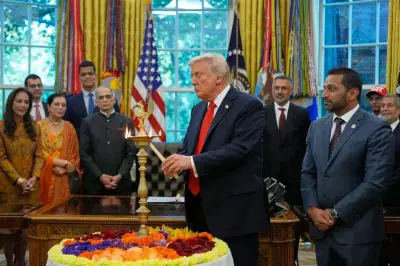
President Donald Trump is fundamentally transforming America's position in international affairs during his second term. His administration is steering the United States away from its traditional role as the primary guarantor of global security while maintaining the objective of preserving peace worldwide.
The Trump Doctrine: Burden-Sharing and Strategic Focus
The cornerstone of Trump's foreign policy approach involves pressing allied nations to significantly increase their defense budgets. The President has actively claimed credit for mediating conflicts across Africa and the Middle East while simultaneously vowing to bring Europe's ongoing war to a conclusion. When Trump assumed office, he inherited active conflicts in both Gaza and Ukraine, coupled with the long-term decline of America's share in global GDP—the fundamental basis for its geopolitical influence.
Trump demonstrates a distinct aversion to foreign entanglements, believing that overseas military engagements have stretched American forces too thin. His solution centers on encouraging European and Asian allies to assume greater responsibility for their own defense, scaling back U.S. assistance to Ukraine, and avoiding direct American military involvement in foreign conflicts.
This policy does have notable exceptions. The administration has intensified military activities in Latin America, which Trump considers within America's sphere of influence. Additionally, earlier this year, the President authorized strikes on Iranian nuclear facilities, demonstrating willingness to use force when deemed necessary.
Global Consequences: Peace or Increased Conflict?
Eight months into Trump's second term, the world witnesses a mixed record of achievements and challenges. While a fragile peace agreement exists in Gaza, multiple regions have experienced their most intense clashes in decades, and the war in Ukraine continues unabated.
The fundamental question remains whether Trump's vision provides a sustainable blueprint for restoring global stability or risks extending existing chaos. Analysts suggest that American retrenchment could remove crucial guardrails that have historically constrained conflicts, potentially heightening the risk of regional wars escalating beyond control.
Trump's strategy represents a significant gamble—that a more focused U.S. military combined with allies investing more substantially in their own defense will strengthen deterrence capabilities. There's merit to this argument: decades of costly wars and allied dependence on American security commitments have strained military resources and diverted attention from emerging threats, particularly from China.
Economic Implications and Global Power Dynamics
The economic consequences of this foreign policy shift are substantial. If successful, reduced global conflict would mean fewer market shocks and supply chain disruptions. Increased defense spending could provide a temporary boost to gross domestic product across allied nations, though this comes with the trade-off of swelling public debt and higher borrowing costs.
However, the more likely scenario appears to be increased global instability. The United States plays a critical role in addressing transnational threats like piracy and terrorism, and its reduced presence may create security vacuums that other nations cannot or will not fill. Building military capability requires years, not months, of sustained investment and political commitment.
Multiple conflict zones have already intensified during Trump's second term. Thailand and Cambodia, India and Pakistan, and Israel and Iran have all engaged in their most severe clashes in decades, while Europe's largest land war since World War II continues relentlessly.
The most dangerous potential outcome involves great-power conflict. Historical patterns indicate that major wars often occur during periods of geopolitical transition. Russia might perceive NATO's eastern flank as vulnerable, while China could test the limits of America's ambiguous commitment to Taiwan.
The economic impact of such conflicts would be catastrophic. A Russian invasion of Baltic states could eliminate $1.5 trillion from global GDP in the first year alone. Conflict between North and South Korea might cause over $4 trillion in global economic losses. A U.S.-China confrontation over Taiwan could cost the world economy an staggering $10 trillion, particularly as Taiwan represents the world's primary supplier of advanced semiconductors.
Despite these alarming scenarios, the overwhelming costs of great-power conflict—including potential nuclear catastrophe—have historically served as powerful constraints against escalation among major powers.
President Trump's vision ultimately represents a calculated risk that increased allied spending will prevent wars from occurring. It's a gamble on burden-sharing without bloodshed, but if this strategy fails, the global consequences could be severe and far-reaching.





